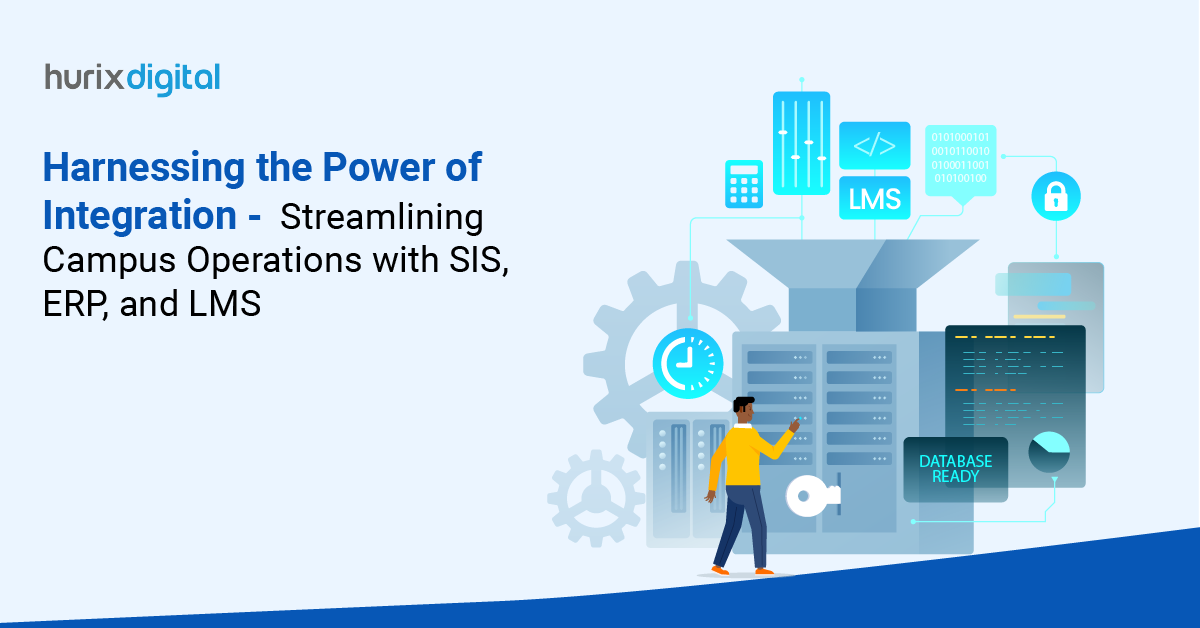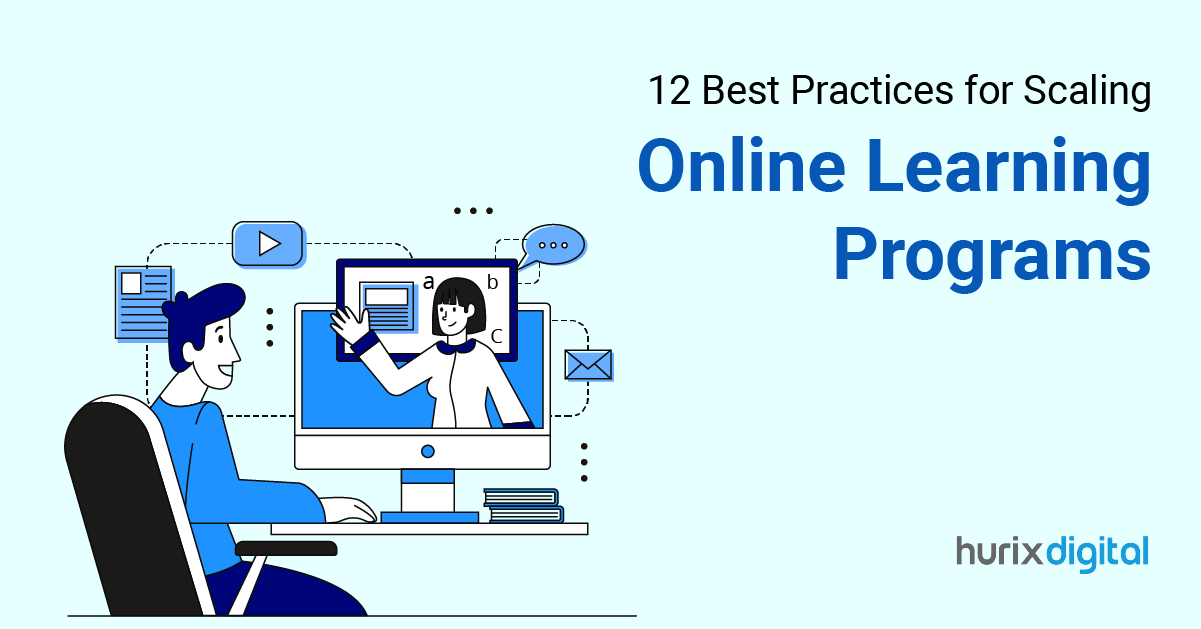
Harnessing the Power of Integration – Streamlining Campus Operations with SIS, ERP, and LMS
Summarize with:
System integration is crucial for building a complete digital environment in universities. It means aggregating different types of campus technologies, such as Student Information Systems (SIS), Enterprise Resource Planning (ERP), and Learning Management Systems (LMS).
This is especially important to the institutions in facilitating operational efficiency and improved data management. In fact, most students revealed that since COVID-19 started, over 60% believed the classrooms that used learning technology increased their learning and grades.
These systems help integrate processes and result in better decision-making and resource allocation, leading to a more connected and efficient campus environment. This unified approach can significantly improve administrative activities, enhancing processes such as student enrollment and financial planning.
By integrating key systems, universities are better equipped to adapt to the evolving needs of students and staff, ensuring that campus operations are efficient and responsive to change.
Table of Contents:
- The Role of System Integration in Higher Education
- Key Systems to Integrate: SIS, ERP, and LMS
- Benefits of System Integration for University Campuses
- Steps to Achieve Successful System Integration
- Challenges Faced by University Registrars Without Integrated Systems
- Conclusion
The Role of System Integration in Higher Education
Technology evolved from basic digital tools in education to the most advanced integrated systems. System integration is the most radical change toward:
1. Streamlined Operations
Integrated systems, like ERP, SIS, and LMS, facilitate the automation of most university administrative work to reduce the manual workload and enhance efficiency. These systems are interconnected, thus allowing institutions to easily streamline processes like registration, grading, and resource management.
2. Advanced-Data Integration
Integration of data dismantles silos and smoothens the process of sharing information across departments. The strategy helps in better decision-making because administrators receive the correct, real-time information for planning and reporting.
3. Enhanced Student Engagement
LMS integration ensures personalized learning, enabling an institution to shape every student’s educational experience based on their unique needs. This improves student engagement, as learning platforms would be more integrated and interactive.
4. Future-Proofing Institutions
System integration supports universities’ adaptability to changing technological trends, such as artificial intelligence and predictive analytics. This is crucial to guaranteeing competitiveness in an ever-changing educational landscape and staying ahead of technological advancement.
Also Read: Partnering with Accessibility Companies – Enhancing Your EdTech Content Strategy
Key Systems to Integrate: SIS, ERP, and LMS
Integrating key systems such as Student Information Systems (SIS), Enterprise Resource Planning (ERP), and Learning Management Systems (LMS) is crucial for enhancing efficiency across university campuses. Here’s a detailed look at each system and why their integration is essential:
1. Student Information Systems (SIS)
SIS is one of the core repositories for most student data, including enrollment, grades, and academic records. It consolidates any information about the student that can easily be retrieved by the institution’s personnel and the students. This reduces manual manipulation of the data that may lead to errors.
SIS will save administrative time by automatically consolidating data into one system and securing the accuracy and accessibility of student information.
2. Enterprise Resource Planning (ERP)
ERP is a software program that combines every aspect of the university’s functions, such as financial management, HR management, and administration. By centralizing these tasks, ERP systems allow organizations to oversee resources, monitor finances, and streamline processes effectively.
This system facilitates holistic planning and decreases manual tasks by automating routine responsibilities. This enables employees to concentrate on strategic efforts to improve campus operations.
3. Learning Management Systems (LMS)
LMS platforms assist with online education, managing courses, and keeping students engaged. They provide customized learning opportunities and allow for immediate monitoring of student advancement.
Before the pandemic, interaction technologies like live chatting, polling, and breakout room discussions were widely popular and continue to be favored. A study found that 67% of students utilize these tools in educational settings.
Benefits of System Integration for University Campuses
System integration provides universities with a cohesive approach to managing operations, enhancing administrative efficiency, and improving student services. Here are some of the key benefits to consider:
1. Improved Data Integration and Streamlined Processes
Integrated systems like SIS, ERP, and LMS automate data exchange across departments, reducing manual data entry and minimizing errors. This streamlined approach accelerates processing times and enhances data accuracy, allowing staff to focus on strategic tasks rather than repetitive ones.
Integrated systems connect all areas of campus operations, enabling smooth workflows and reducing administrative burdens.
2. Enhanced Decision-Making with Centralized Information
Integration centralizes data from various systems, giving administrators real-time access to critical information. This accessibility supports informed decision-making in student enrollment, financial planning, and academic performance management.
Integrated systems facilitate data-driven strategies that can improve the effectiveness of institutional planning and resource allocation.
3. Supports Daily Operations
- Registration: Integrated SIS synchronizes data across all platforms, streamlining the registration process and reducing student wait times.
- Grading: LMS integration allows faculty to manage grading and feedback efficiently, ensuring students receive timely results and insights into their performance.
- Resource Management: ERP systems optimize resource allocation. This enhances the management of finances, facilities, and human resources and improves overall campus efficiency.
Steps to Achieve Successful System Integration
Achieving success in system integration at universities is a goal that has to be meticulously planned and implemented. The following outlines some of the key steps involved in ensuring a coherent and seamless integration process:
Step 1: Assess Current Systems
This involves the assessment of Student Information Systems (SIS), Enterprise Resource Planning (ERP), and Learning Management Systems (LMS) being used currently. This first stage of the integration process identifies gaps, inefficiencies, and compatibility problems that must be remediated.
Understanding what works and what doesn’t goes a long way in enabling universities to effectively tailor their integration strategy toward meeting operational needs.
Step 2: Select Integration Tools
The right selection of integration tools plays an important part in the overall success of the integration process. The tools should meet the institution’s goals, serve data integration, and fit comfortably with existing systems. Important consideration factors are scalability, ease of use, and cost-effectiveness.
The right selection of tools will ensure that the integrated system becomes flexible enough to accommodate future technological needs and expansions.
Step 3: Involve Key Stakeholders
Engaging key stakeholders, such as IT teams, faculty, administrators, and end users, from the start is central to ensuring that the integration process is successful. Early involvement of stakeholders assures that the system will satisfy the needs of those users and hence supports improvement and, therefore, adoption.
Active participation of all stakeholders helps reduce resistance and ensure quicker, less disruptive implementation.
Challenges Faced by University Registrars Without Integrated Systems
Without integrated systems, university registrars face significant challenges affecting data management, student services, and overall campus efficiency. Some of the challenges include:
1. Data Silos
Information is often kept in data silos due to a lack of system integration between key systems like SIS, ERP, and LMS. This fragmented data structure leads to multiple versions of information, causing delays in accessing time-sensitive data and hindering effective decision-making and communication.
Data silos can result in redundant data entry, inconsistencies in student records, and challenges in delivering accurate information to stakeholders. All this impacts the overall efficiency of campus operations.
2. Manual Processes
When systems are not integrated, registrars often manually enter information and use paper-based methods, significantly increasing the risk of errors. This approach consumes much time that could have been used in strategic tasks to enhance student services.
Manual processes slow down workflows, add to data inaccuracies, and prevent administrative staff from engaging directly with students. This reduces the overall quality of service.
3. Operational Inefficiencies
The lack of integration results in operational inefficiencies within registration, grading, and financial operations.
For example, the problem of non-integration between SIS and LMS can delay grade updates, affecting students’ access to timely feedback.
Also Read: 6 Best EdTech Content Accessibility Tips You Must Follow
Conclusion
For University Registrars, system integration plays a crucial role in improving data management, streamlining processes, and enhancing student services. By integrating systems like SIS, ERP, and LMS, universities reduce manual tasks and support more informed decision-making.
Additionally, exploring integration solutions helps institutions optimize campus operations, increase efficiency, and provide a better experience for students and staff alike.
Hurix Digital offers tailored system integration solutions that address the unique challenges of higher education. Contact us today to discover how our expertise can help your university achieve seamless integration and drive operational excellence.
Summarize with:

Senior Vice President
A Business Development professional with >20 years of experience with strong capability to sell new solutions and develop new markets from scratch. New Market Entry Specialist with experience working in the largest emerging markets. Exceptional experience in conceptualizing, ideating and selling new learning technologies like VR AR, etc. across multiple industry verticals.
 A Space for Thoughtful
A Space for Thoughtful 



